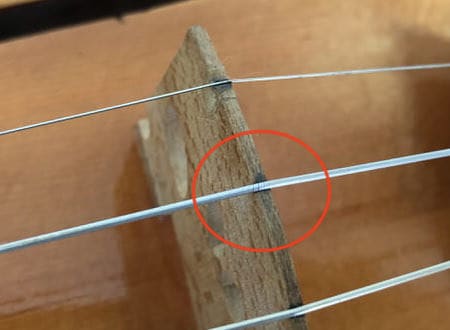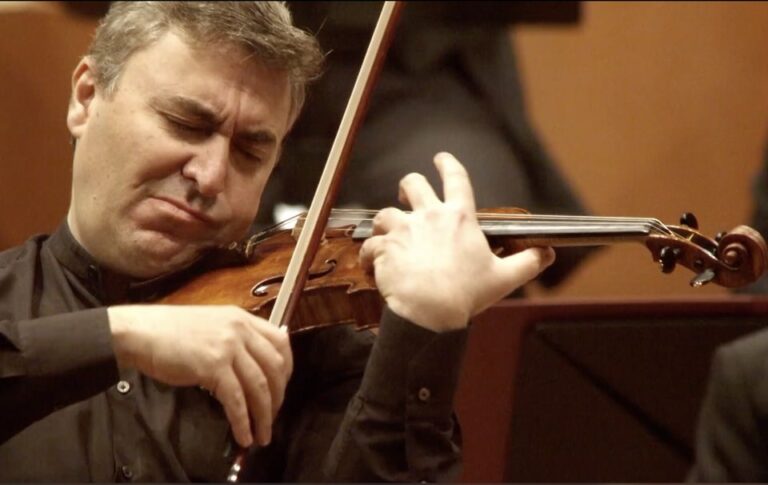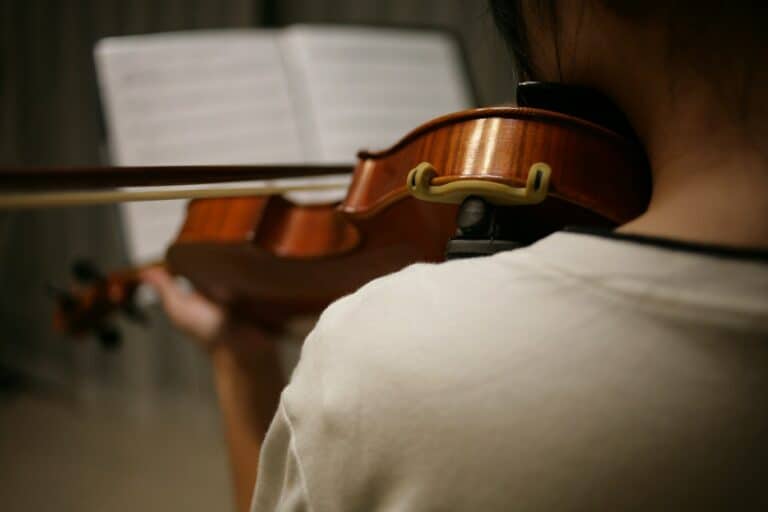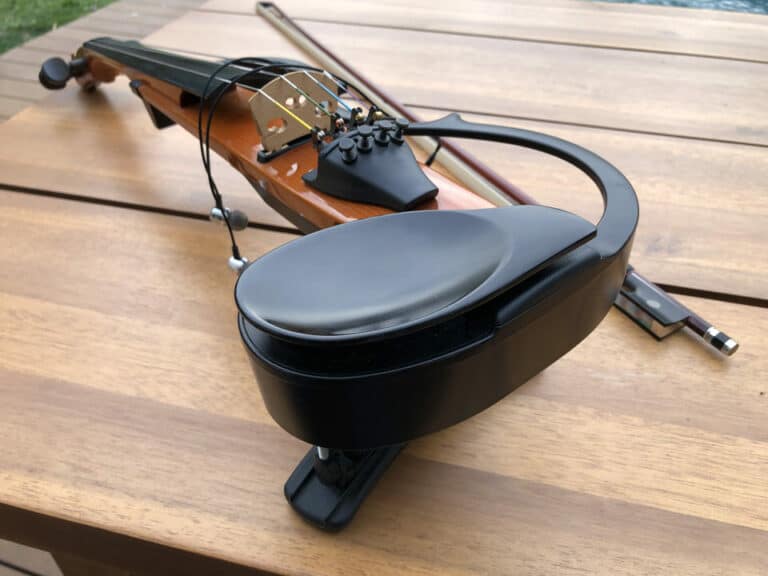When to Change Strings on a Violin? What to look for
Strings wear out little by little, gradually. So it is not always easy to decide exactly when to change strings. It is an often asked question. So it is important to make the most out of our instrument while keeping our budget straight.
On an average basis, a professional violinist should keep strings for three to six months. A student, even a beginner, should change strings after six months to a year. Old strings have a dull sound, do not stay in tune, and are bad for intonation: intervals are out of tune.
Using this general rule of thumb, you will have good strings on your instruments. But it would be best if you understood how to determine when your strings need to be changed and what consequences you risk when you keep your strings for too long. When your change strings, you have that great sound and fresh feeling. Your bow will feel smoother as if the strings require less effort to vibrate. This is a great feeling.
Don’t forget to refer to my violin and bow maintenance guide for an overall how-to.
How often should I change strings on my instrument?
Of course, it depends on the amount of time a day a violinist practices or plays. On a general rule of thumb, if I have to give one answer, six months is a time frame when on average, it is safe to change your strings. Of course, your mileage may vary. But even for students, it is important to have fresh strings to develop technique. It helps with the clarity of the sound and with the intonation in general, especially for double stops. So if we dive a bit deeper into details, students, especially beginners, should change their strings at least once a year and professional three to six months.
If a student changes strings twice a year, that means that his or her teacher will help choose the string set at the beginning of the year. Then, a new set might be important after a six-month mark because it will help obtain a good sound and a good intonation for exams at the end of the year. Everybody who has studied violin must agree that a little extra help is always welcome for the exams. And many students have average or below average violins to practice with: a fresh and good string set can give an extra boost of confidence to finish the year.
Professionals need to play at their best potential, their best form, throughout the year. Orchestra musicians can save a bit on strings and delay when they change sets. But soloists or orchestra musicians who play solos or chamber music do not have any choice. Even if it can be a budget, changing strings regularly is a must, to maintain a high standard. A fresh set of strings help to reach perfect intonation, cristal clear tone with rich overtones, give a great sound projection, and is smoother to the bow. That new strings feeling is subtle but precious. And an instrument to which a violinist has given so many years of practice needs to be perfectly set up. So three to six months is a good average for a violinist to change strings. It can be adjusted, of course, depending on how much we practice, play, summer or winter, if the humidity rates vary, if the weather is hot, if we sweat when we play, and so on.
Professionals and soloists can change strings to change their tone
We shouldn’t forget that strings are a tool. There is no such thing a the best violin string set; a string set has to be carefully chosen for:
- a particular musician,
- a particular instrument,
- the desired tone for a mood, a piece,
So, once you know your instrument well and you have tried many string sets in your career, you can naturally choose your strings depending on the repertoire. And I am not only talking about gut strings for baroque music. I underline that different sets of strings give different sounds to match a given repertoire.
For example, Thomastik Infeld Red strings are louder and stronger; they can suit modern repertoire; Eva Pirazzi strings are rich and brilliant but more subtle and can complement well the romantic era. Try for yourself: but keep in mind that strings are not transparent: they give color to your music, to your art. Take that opportunity to its fullest, and do not unnecessarily delay strings change. New strings can be an asset.
Hilary Hahn said that she even goes as far as playing on brand new strings on purpose for some performances. She looks for that last edge, extra thin brilliance. It gives certain repertoire pieces a unique character.
What are the signs I should change strings?
Fifths are not perfect anymore
What is a fifth? A fifth is an interval of five notes. As the violin is tuned in fifths (G, D, A, E), two strings are separated by an interval of five notes, that is to say, a perfect fifth.
If you stop with one finger, two strings five tones higher on the A – E strings (as shown in the picture), the finger becomes a new nut. If the violin is tuned perfectly, the double stop should give a perfect fifth interval : D – E. Micro adjustments of the weight of the finger are ok, but if the resulting interval is out of tune, then the strings are bad.
It is time to change strings. Strings can wear out differently, can be stretched irregularly. Before we even talk about sound, the perfect fifth is a clear indicator that a set of strings can still be used or should be changed. If the fifth is false, out of tune, then as a consequence, many things become harder to play, and the hand has to adjust:
- double stops,
- chords,
- octaves,
- intonation in general.
So, why fifths particularly? Everything can be corrected by ear, in violin technique, except for the fifth. As a finger stops two strings at the same time, there is nothing you can do to adjust the interval.
There is no need to do anything else than change strings immediately if the fifth is out of tune.
I speak out of personal experience. When I was a student, I didn’t change strings often enough. I was struggling playing fifths. Up the fingerboard, there was up to a half-step discrepancy in the expected fifth. I went to my luthier. He just laughed and changed strings. I went back home and played great fifths…
The sound loses its edge and clarity
What clues do indicate when to change strings?
It is usually coming together with the string not vibrating as much: it doesn’t give the ringing bell type of sound the clear edge to the note it used to. The sound is not as shiny and comes out a bit bland, slightly muffled. Of course, it occurs progressively and not at once. That is why it can be difficult to notice it at first.
Yes, the sound will become dull after some time. But I don’t believe it will become scratchy and muffled automatically if you use good quality strings a bit too long; you will lose edge and brilliance, for sure, but the first thing you will notice is bad fifths.
Tuning becomes more challenging and unstable
If you are not happy with the stability of your Tuning, that is to say; strings do not hold tension and over-stretch; this is an indication that your string set is worn-out.
What happens when strings age?
Old strings gather up dirt and rosin
Rosin, skin particles, dust particles dampen into the strings, on a microscopic level, around and between the windings. Then the sound doesn’t feel as fresh as it used to. There is more mass to move around when the string vibrates. And this mass is irregularly present around the string.
Often, there is rosin aggregated below the string because we tend to swipe and clean the top of the strings. This rosin deposit can get bigger and bigger and eventually prevents the string from vibrating correctly.
That is why it is important to always clean and wipe the strings on their upper side but their downside as well, facing the fingerboard.
Old strings stretch too much and irregularly
DO not take old strings to use them again. If your strings have been used a couple of weeks, do not take them off, expecting to use them later. Once your strings have been stretched, they won’t be good for another use.
The way strings naturally stretch and hold tension is really linked to the way they vibrate. If they have been stretched for too long, or too much (if you tune your violin up too sharp), then your strings are damaged, especially if they are steel strings.
Old strings can break easily
If you keep your old set of strings to their limit, you always take the chance to break your strings during a concert. And this isn’t something you want. Old strings wear out and become weak at special points: the peg, the nut, the bridge, the tailpiece. This is always where strings should be visually inspected for signs of weaknesses. At the nut and the bridge, it is where the strings come in contact with the instrument. And the wrapping can come undone in those places, where maximum strain is. In the picture of this blog, we can see that the winding starts to loosen on the bridge for the A string (but not for the G and D). This is the first sign of wear, and maybe it is about time I changed my Evah Pirazzi. It is not completely undone yet as I change my strings regularly and look for the first signs of wear and tear.

How long before a concert can I change strings?
Usually, three days are enough for the strings to settle down. If you want to be extra sure, let’s make it a week, and those gut strings will have enough time to settle as well.
When you install a new set of strings, they need time to stretch and adapt to the new tension naturally. At the very beginning, tuning can be inconsistent. The sound is too bright, acid at the very beginning. After a couple of hours of practice, everything has settled down.
The earlier the technology, the longer it takes for a string set to adapt to your instrument.
Plain gut or even winded gut strings take longer to stretch. You will have a tuning issue for a couple of days at least. It takes time for gut strings to stretch completely, and they are prone to change if humidity and temperature change.
Steel strings are far quicker to stretch and become stable earlier.
If it is important that you change your gut strings a week before a concert, three to four days are enough when it comes to steel strings.
Synthetic core strings are modern strings that require less than three days, maybe two to settle down. You can even change your string set the day before your concert. You will already have most of its stability and good tuning with an edgy tone.
As I have said above, it is up to your taste, try and experiment. I always give the strings (and myself) at least three days to settle before a concert.
Now that you know how and when to change strings, here are the strings I recommend, and my tips on how to change your strings yourself without making the most common mistakes.







